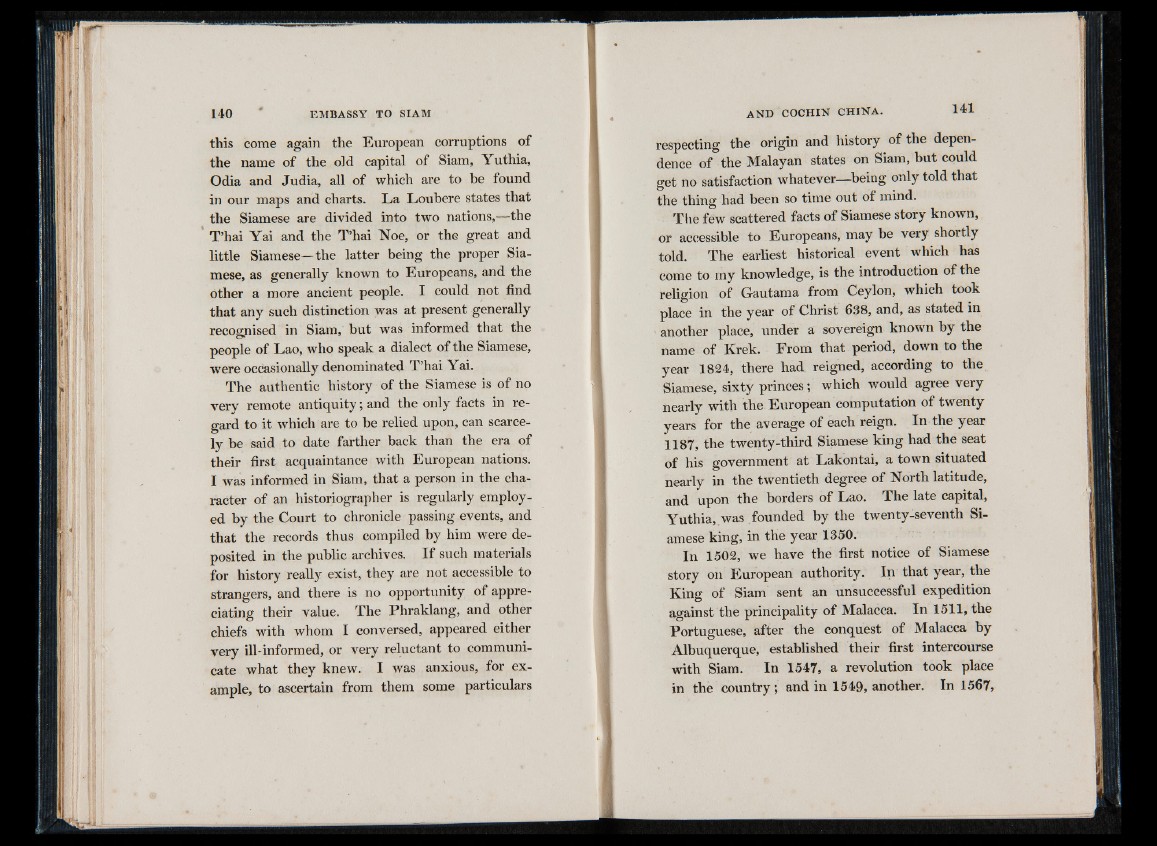
this come again the European corruptions of
the name of the old capital of Siam, Yuthia,
Odia and Judia, all of which are to be found
in our maps and charts. La Loubere states that
the Siamese are divided into two nations,—the
T ’hai Yai and the T’hai Noe, or the great and
little Siamese—the latter being the proper Siamese,
as generally known to Europeans, and the
other a more ancient people. I could not find
that any such distinction was at present generally
recognised in Siam, but was informed that the
people of Lao, who speak a dialect of the Siamese,
were occasionally denominated T ’hai Yai.
The authentic history of the Siamese is of no
very remote antiquity; and the only facts in regard
to it which are to be relied upon, can scarcely
be said to date farther back than the era of
their first acquaintance with European nations.
I was informed in Siam, that a person in the character
of an historiographer is regularly employed
by the Court to chronicle passing events, and
that the records thus compiled by him were deposited
in the public archives. I f such materials
for history really exist, they are not accessible to
strangers, and there is no opportunity of appreciating
their value. The Phraklang, and other
chiefs with whom I conversed, appeared either
very ill-informed, or very reluctant to communicate
what they knew. I was anxious, for example,
to ascertain from them some particulars
respecting the origin and history of the dependence
of the Malayan states on Siam, but could
get no satisfaction whatever—being only told that
the thing had been so time out of mind.
The few scattered facts of Siamese story known,
or accessible to Europeans, may be very shortly
told. The earliest historical event which has
come to my knowledge, is the introduction of the
religion of Gautama from Ceylon, which took
place in the year of Christ 638, and, as stated in
another place, under a sovereign known by the
name of Krek. From that period, down to the
year 1824, there had reigned, according to the
Siamese, sixty princes; which would agree very
nearly with the European computation of twenty
years for the average of each reign. In the year
1187, the twenty-third Siamese king had the seat
of his government at Lakontai, a town situated
nearly in the twentieth degree of North latitude,
and upon the borders of Lao. The late capital,
Yuthia, was founded by the twenty-seventh Siamese
king, in the year 1350.
In 1502, we have the first notice of Siamese
story on European authority. In that year, the
Kins; of Siam sent an unsuccessful o expedition
against the principality of Malacca. In 1511, the
Portuguese, after the conquest of Malacca by
Albuquerque, established their first intercourse
with Siam. In 1547, a revolution took place
in the country $ and in 1549, another. In 1567,